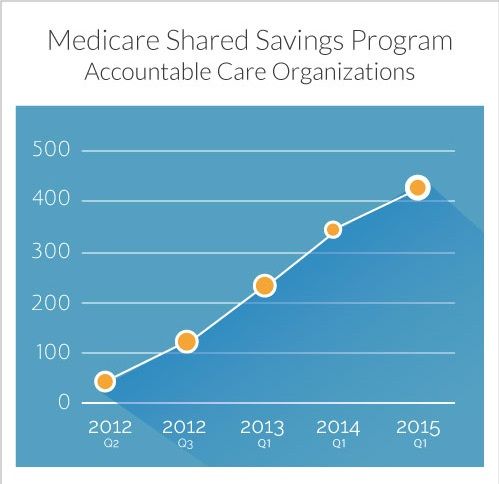Measuring the Success of ACOs & Next Steps for Continued Growth
- Blake Rodocker
- April 20, 2015

With rising costs a major concern in healthcare, many steps have been taken in recent years to improve care quality and curb spending. Maximizing value for patients has been one solution to the problem, with organizations attempting to achieve favorable outcomes by shifting from fee-for-service care delivery to a fee-for-value model – one that focuses on better care coordination and that rewards participants through shared savings payments when certain benchmarks are met.
The formation of accountable care organizations (ACOs), networks of providers that agree to be accountable for the quality, cost and overall care of an assigned population of patients, is one way that the healthcare industry is working to lower spending. For example, if an ACO succeeds in reducing costs and improving care quality for Medicare-eligible patients, Medicare rewards it with a share of the savings.
ACOs are a significant contribution of the Affordable Care Act, and their numbers are increasingly rapidly. There were just 27 ACOs selected to participate in the Shared Savings Program in April 2012, and there are more than 400 today.
In theory, ACOs make perfect sense – better care coordination leads to more accurate diagnoses and improved treatment outcomes, while fewer duplicate services result in less spending. The million dollar question, however, is whether ACOs are actually able to achieve these desired results. Early results say ‘yes.’
Pioneer ACOs
According to data released by the Centers for Medicare and Medicaid Services (CMS) in September 2014, the 23 Pioneer ACOs generated over $96 million in savings in Year 2 (2012) and qualified for shared savings payments of about $68 million.
Though it is important to note that not every Pioneer ACO participating in the program achieved savings (3 generated shared losses), most performed well on quality, with the mean quality score increasing from 71.8 percent in 2012 to 85.2 percent in 2013.
Pioneer ACOs also demonstrated improvement in 28 of the 33 quality measures from 2012 to 2013, including:
- Screening for high blood pressure
- Screening for future fall risk
- Screening for tobacco use and cessation
- Patients’ ratings of providers’ communication
- Health promotion and education
Not bad, considering the program is still in its infancy.
MSSP ACOs
The 220 Medicare Shared Savings Program (MSSP) ACOs saw considerable success in Year 1 (2012), with over 53 percent (118 ACOs) reducing spending. Unfortunately, less than half of those ACOs (52 in total) qualified for shared savings.
A breakdown of results for the 220 MSSP ACOs is as follows:
- 52 reduced spending enough to earn shared savings.
- 6 reduced spending enough to earn shared savings, but failed to satisfactorily report quality metrics.
- 60 reduced spending, but not enough to earn shared savings.
- 101 increased spending, but not enough to have shared losses.
- 1 significantly overspent budget and had shared losses.
Medicare has yet to release 2013 data for MSSP ACOs, so it’s hard to know whether participating ACOs have succeeded in further reducing spending and qualifying for shared savings.
A Case for Future ACO Profitability
While most ACOs performed above average on quality, there is still considerable room for improvement. But as ACOs keep gaining experience, care quality will improve and shared savings will continue to grow. In the meantime, one thing that CMS can do to help is to offer more help for organizations interested in participating in the MSSP ACO program. This includes providing a better understanding of the factors critical to success.